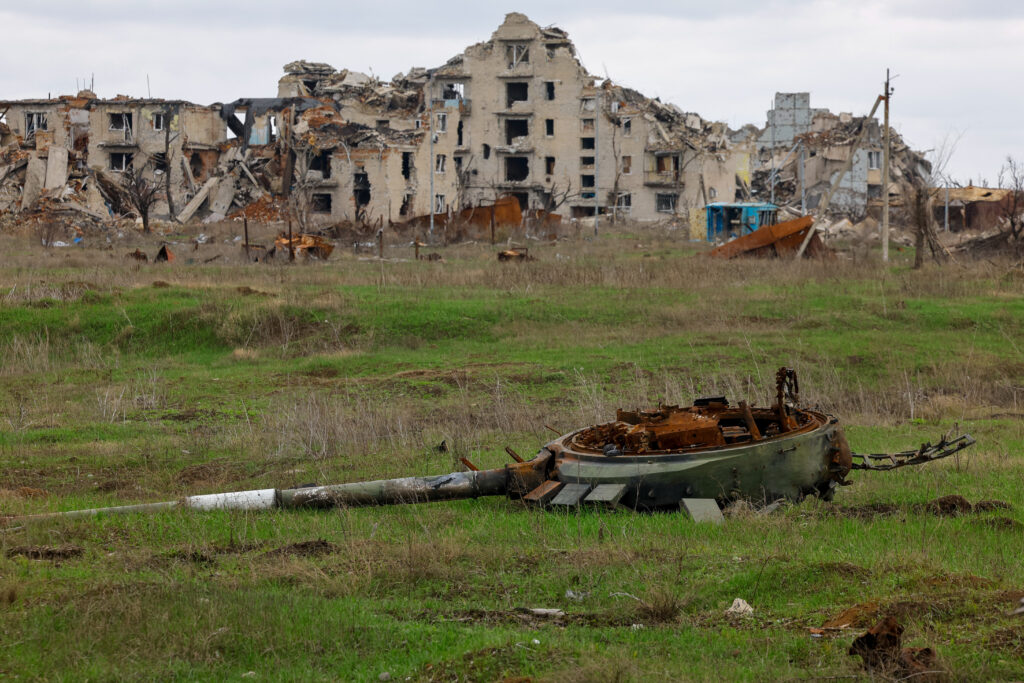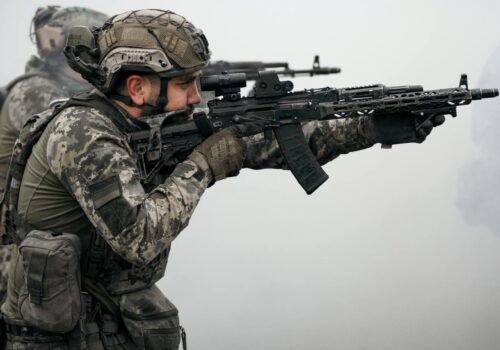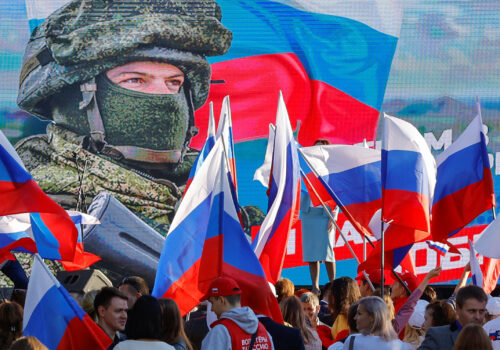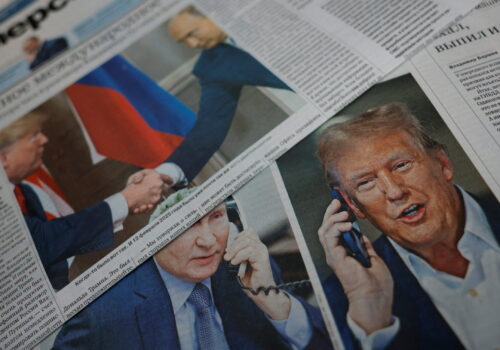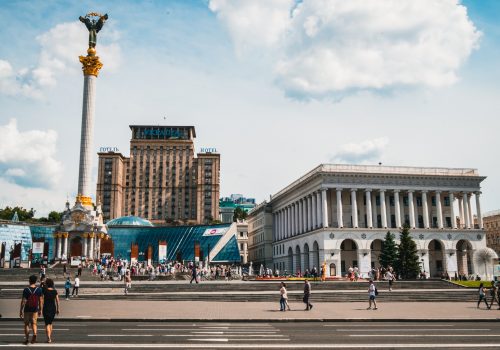Almost two months since the start of negotiations between the United States and Russia over the war in Ukraine, it is clear that Russian President Vladimir Putin is in no hurry to end his invasion. While Ukraine has agreed to an unconditional ceasefire, Russia refuses to do likewise. Instead, the Kremlin continues to make excuses and employ a range of stalling tactics in an apparent bid to drag out the negotiating process indefinitely.
This failure to achieve a breakthrough is a significant setback for US President Donald Trump, who famously claimed during the 2024 election campaign that he would end the war in twenty-four hours. Since returning to the White House in January, Trump’s approach to peace talks has been based on the need for a compromise settlement. He has sought to persuade Moscow and Kyiv by pointing to the devastating cost of continued hostilities, while arguing that neither side can realistically hope to achieve their goals via military means.
So far, Putin remains unconvinced. This is in part due to Trump’s own actions. The US leader’s foreign policy turn away from Europe, together with his frequent Kremlin-friendly statements and hostile treatment of Ukrainian President Volodymyr Zelenskyy during their notorious Oval Office meeting, have encouraged Putin to believe that he can outlast the West in Ukraine.
With the Western coalition in support of Ukraine looking increasingly fragile, Putin is now more than confident than ever of succeeding in his historic mission to extinguish Ukrainian statehood. This is reflected in his current negotiating position, which includes a series of maximalist demands that would deny postwar Ukraine any meaningful sovereignty or security, leaving the country at Russia’s mercy.
Needless to say, Putin’s insistence on an internationally isolated, disarmed, and defenseless Ukraine is a non-starter for Kyiv. Ukrainians have learned the bitter lessons from previous international agreements with Russia such as the 1994 Budapest Memorandum, which did not deter Moscow from attacking Ukraine in 2014 and failed to prevent the full-scale invasion of 2022. Understandably, Ukrainian officials are now emphatic that security guarantees for their country must be at the heart of any future peace deal.
Stay updated
As the world watches the Russian invasion of Ukraine unfold, UkraineAlert delivers the best Atlantic Council expert insight and analysis on Ukraine twice a week directly to your inbox.
With Putin unwilling to make concessions and seemingly determined to fight on, the United States will soon be forced to reassess its approach to ending the Russia-Ukraine War. In order to deliver on his promise of peace, Trump must seek to change Russia’s strategic calculus and convince the Kremlin that its present goals in Ukraine are unattainable.
Any settlement seems certain to involve Russia’s continued occupation of the almost 20 percent of Ukraine that is currently under Kremlin control. This has led some commentators to draw parallels with the partition of the Korean peninsula following the Korean War in the early 1950s. In order for such comparisons to be relevant, the front lines of the current war in Ukraine must be stabilized to the extent that neither side has any realistic chance of achieving a decisive military victory. That is not yet the case.
If a ceasefire proves possible, the next challenge will be moving toward a more permanent peace. Trump has made it clear that he does not support Ukrainian membership of NATO and will not deploy US troops to Ukraine in order to enforce any peace deal. Instead, responsibility for safeguarding Ukraine’s security will fall primarily on the country’s own armed forces and Kyiv’s European partners. This cannot be compared to the kind of watertight security guarantees that many Ukrainians had hoped for, but it is not entirely unrealistic.
The Ukrainian military has evolved dramatically since 2022 and already represents a formidable obstacle to Putin’s imperial ambitions. Crucially, Ukraine has emerged over the past three years as one of the world leaders in drone warfare. In 2024, Ukraine became the first country to establish a separate branch of its military dedicated to drones. Hundreds of Ukrainian companies are now producing millions of drones per year, and are using wartime conditions to test their products on the battlefield. This is leading to new innovations on a virtually daily basis. Ukraine’s drone revolution is already transforming the way wars are waged and can serve as a key pillar of the country’s future security.
The broader Ukrainian defense industry is undergoing rapid expansion but needs additional investment in order to make the most of excess production capacity. With this in mind, Kyiv is calling on the country’s partners to place orders with Ukrainian defense companies and support joint ventures. If sufficient international investment is forthcoming, Ukraine’s defense sector can become a key component in Europe’s future security architecture. This would greatly improve the country’s ability to defend itself and help contain the threat posed by an expansionist Russia.
Eurasia Center events

With continued United States security support no longer assured, European countries are now embarking on an unprecedented rearmament drive. This will have huge implications for any peace settlement in Ukraine. Indeed, Ukraine’s survival may well hinge on Europe’s ability to match the current rhetoric about the need to rearm with concrete steps to boost weapons production.
The EU is preparing to unveil a major package of measures to support defense sector spending in the coming weeks, while individual countries including Germany are set to radically increase national defense budgets. A significant portion of Europe’s expanding arms industry output will likely go to Ukraine. After all, European leaders are acutely aware that if Ukrainian resistance should falter, they will be next in line.
Some European countries are also expected to play a more direct role in enforcing a peace deal in Ukraine. A “coalition of the willing” led by Britain and France is already taking shape, with practical discussions between military chiefs over possible troop deployments now well underway. However, it is still far from clear whether European troops in postwar Ukraine would have a mandate to engage in combat operations, leading to doubts over their effectiveness as a deterrent force.
While details remain vague, Ukrainian commanders and their European partners are currently discussing a military presence “on land, in the sky, and at sea.” The most practical contribution may be in the air, with coalition forces potentially capable of supplying fighter jet squadrons and air defense systems. This could allow them to close the skies over large parts of Ukraine, minimizing the threat posed by Russian missiles and drones without risking direct clashes between coalition and Russian forces.
Officials in Kyiv and across Europe are also still counting on some degree of continued US support. First and foremost, this means leading the diplomatic push for a ceasefire and the start of serious peace talks.
While it is thought to be highly unlikely that the Trump administration will be willing maintain earlier levels of military aid, the US can still make a critical contribution to Ukraine’s security in terms of intelligence sharing, sanctions enforcement, and the supply of specific munitions such as missiles and air defense interceptors. In a bid to win Trump’s approval, Ukraine has recently expressed a willingness to pay for future US weapons packages, possibly with support from European partners.
After two months of false dawns and failed ceasefires, it is evident that the road toward a sustainable settlement in Ukraine remains long and uncertain. The radical recent shift in US foreign policy under Trump has transformed perceptions of what a possible peace deal in Ukraine could look like, but a plausible picture is now slowly beginning to emerge.
Naturally, the first step is to stop the fighting. If US-led talks do lead to a ceasefire, preparations are in place that should allow Ukraine and the country’s European partners to make any temporary pause in hostilities more permanent. Participating European countries will be expected to close Ukrainian skies and provide a reassurance force of troops on the ground, creating the conditions for a Ukrainian national recovery. In parallel, they must also significantly increase the flow of military aid to Kyiv and strengthen Ukraine’s domestic defense industry.
Ultimately, Ukraine’s main security guarantee will remain the Ukrainian Armed Forces. The country’s military has already proven itself during the past three years of full-scale war. If Kyiv’s European partners can now rise to the challenge and provide sufficient support, Ukraine looks destined to continue guarding Europe’s eastern frontier and defending against the Russian threat for many years to come.
Mykola Bielieskov is a research fellow at the National Institute for Strategic Studies and a senior analyst at Ukrainian NGO “Come Back Alive.” The views expressed in this article are the author’s personal position and do not reflect the opinions or views of NISS or Come Back Alive.
Further reading
The views expressed in UkraineAlert are solely those of the authors and do not necessarily reflect the views of the Atlantic Council, its staff, or its supporters.

The Eurasia Center’s mission is to enhance transatlantic cooperation in promoting stability, democratic values, and prosperity in Eurasia, from Eastern Europe and Turkey in the West to the Caucasus, Russia, and Central Asia in the East.
Follow us on social media
and support our work
Image: A tank turret is seen in a field near ruins of a building in the abandoned town of Marinka (Maryinka), which was destroyed in the course of Russia-Ukraine conflict in the Donetsk region, a Russian-occupied area of Ukraine. April 1, 2025. (REUTERS/Alexander Ermochenko)
